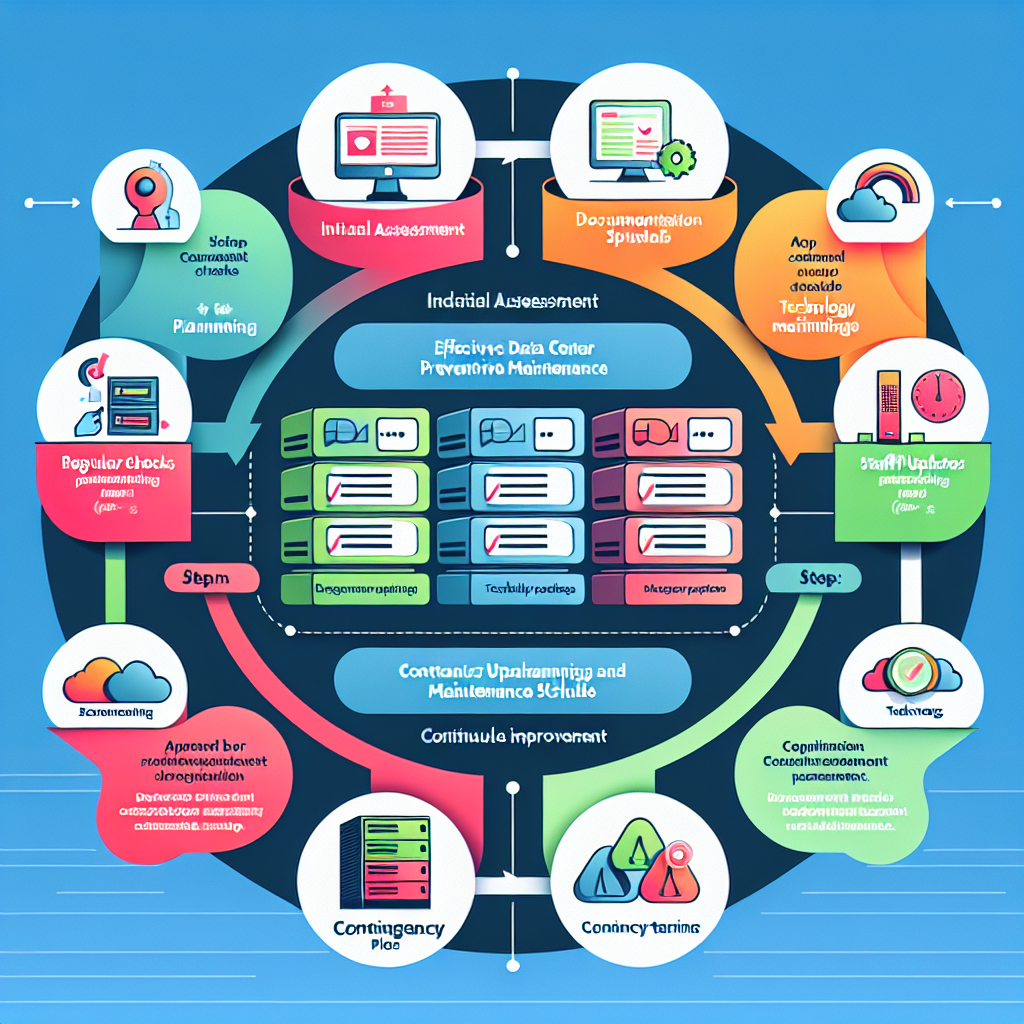Data centers are the backbone of modern businesses, housing critical IT infrastructure and data that are essential for daily operations. To ensure the smooth functioning of a data center and prevent costly downtime, it is crucial to implement a comprehensive preventative maintenance plan. By taking proactive steps to maintain the data center infrastructure, businesses can mitigate the risk of equipment failure, optimize performance, and extend the lifespan of their IT assets.
Here are key steps for implementing an effective data center preventative maintenance plan:
1. Conduct a thorough assessment: Before implementing a preventative maintenance plan, it is essential to conduct a comprehensive assessment of the data center infrastructure. This includes identifying all critical components, evaluating their current condition, and determining maintenance requirements. By understanding the specific needs of the data center, businesses can develop a tailored maintenance plan that addresses potential risks and vulnerabilities.
2. Develop a maintenance schedule: Once the assessment is complete, businesses should create a detailed maintenance schedule outlining the frequency of inspections, tests, and maintenance tasks for each component. The schedule should take into account the manufacturer’s recommendations, industry best practices, and the specific requirements of the data center environment. Regular maintenance activities such as cleaning, lubrication, and equipment checks should be scheduled at appropriate intervals to ensure optimal performance.
3. Establish clear procedures: It is essential to establish clear procedures for conducting maintenance tasks, including step-by-step instructions, safety guidelines, and documentation requirements. By standardizing maintenance procedures, businesses can ensure consistency and accuracy in the execution of maintenance activities. Training staff on the proper procedures and protocols is also crucial to ensure that maintenance tasks are performed correctly and efficiently.
4. Monitor performance and track maintenance activities: To measure the effectiveness of the preventative maintenance plan, businesses should regularly monitor the performance of critical infrastructure components and track maintenance activities. This includes recording maintenance logs, tracking equipment performance metrics, and analyzing trends to identify potential issues before they escalate. By maintaining detailed records of maintenance activities, businesses can track progress, identify areas for improvement, and demonstrate compliance with regulatory requirements.
5. Implement preventive measures: In addition to conducting routine maintenance tasks, businesses should also implement preventive measures to minimize the risk of equipment failure. This includes implementing monitoring systems to detect anomalies, installing backup power systems to prevent downtime during outages, and implementing environmental controls to regulate temperature and humidity levels. By proactively addressing potential risks, businesses can reduce the likelihood of costly disruptions and ensure the reliability of their data center infrastructure.
In conclusion, implementing an effective data center preventative maintenance plan is essential for ensuring the reliability, performance, and longevity of critical IT infrastructure. By conducting a thorough assessment, developing a maintenance schedule, establishing clear procedures, monitoring performance, and implementing preventive measures, businesses can minimize the risk of equipment failure, optimize performance, and maintain the integrity of their data center environment. By prioritizing preventative maintenance, businesses can proactively address potential risks and ensure the continued operation of their data center infrastructure.

Leave a Reply